
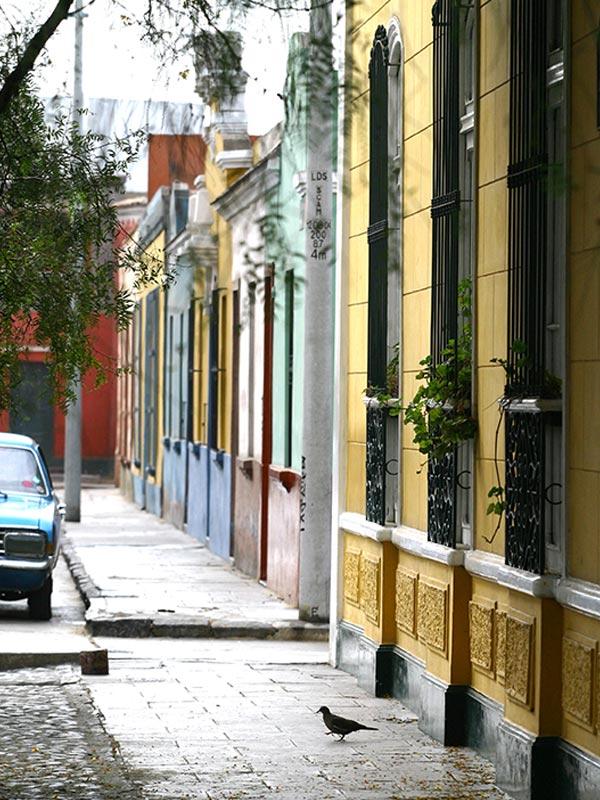
Not too long ago, Lima was little more than a transfer point en route to Machu Picchu. Now, however, well-informed travelers are privy to all that this city by the ocean has to offer. In fact, Lima is a trove of culinary, historic, and cultural gems.
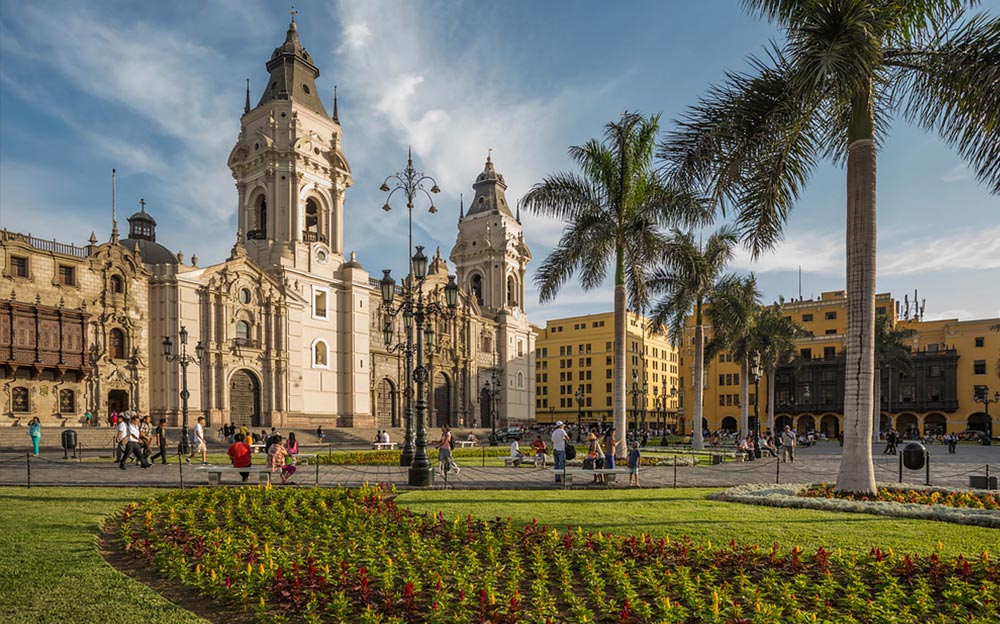
It is possible to perceive the depth of Lima\'s history and culture in its pre-Incan pyramids, such as Huaca Pucllana. Huaca Pucllana’s light adobe brick structure contrasts with the surrounding modern apartment buildings and shops that sprung up in the area mere decades ago. Another layer of Lima’s history can be uncovered by strolling through the Plaza de Armas in the Historic Center. This vibrant square is lined by stunning colonial architecture on all sides.
From pre-Columbian pyramids and colonial cathedrals, to modern skyscrapers and shopping centers, all are odes to Lima\'s varied history. Today, a new era is being forged by the city’s world-class restaurants in contemporary Miraflores, as well as in the art museums of bohemian Barranco. With all it has to offer, Lima proves to be a wonderland of diversity.
Lima lies on the central coast of Peru in the middle of three river valleys: Chillón, Rimac, and Lurín. The entire coast of Peru, from the Pacific to the foothills of the Andes, is a desert climate. Cold ocean upwelling and downward air pressure make the Peruvian Desert one of the most arid in the world. Despite this, early civilizations were able to create elaborate irrigation systems. Agriculture in the river valleys was thus able to flourish.
0 to 984 ft (0-300 m)

The city sits on Peru’s arid coastline. However, the cold water from the Humboldt Current gives this desert subtropical temperatures. Despite mild temperatures and little rainfall, Lima experiences high humidity all year round. On the plus side, the weather in Lima is very predictable depending on the season. There are two distinct seasons: hot, sunny summers and overcast, extremely humid winters.
From November to April
Average daytime temperature: 75-84°F (24-29°C) Average nighttime temperature: 64-72°F (18-22°C)
Summers in Lima are usually hot, but not overbearingly so. (Except for El Niño years, which tend to be sweltering). There is next to no weather variation from day to day, as skies stay sunny with high hanging clouds. The air is quite humid, but there is zero rainfall throughout the season. Nights also remain comfortably warm.
Conditions are typically sunny, warm, and humid. Average daytime temperatures are ~ 80°F (27°C). Mornings and nights are cooler.
From May to October
Average daytime temperature: 61-66°F (16-19°C) Average nighttime temperature: 57-61°F (14-16°C)
Winters in Lima have mildly cold temperatures. However, the extra humidity during this half of the year makes it feel much colder. Low hanging grey clouds cover the majority of the city for months on end. These overcast winters give the city the nickname Lima la Gris (“Lima the Grey”). There is often a light drizzle of rain at night and the early mornings, referred to as garúa in Spanish.
Most people would agree that the best time to visit Lima is during the mid-summer months, December to March. The weather is perfect every day, and it’s really the best way to enjoy a coastal city. Moreover, sunsets during the summer have spectacular shades of orange, pink, and purple.
The beautiful summer months in Lima do correspond to the rainy season in Cusco, though. Those taking advantage of Cusco’s dry season, must therefore compromise during their visit to Lima. Although Lima’s winter weather isn’t ideal, there are plenty of things to do and see to take your mind off the clouds.

Lima is the only major international* airport in Peru. In fact, it is the only entryway into South America for some parts of the globe. Moreover, it is the connecting airport to the rest of Peru. You can take flights from Lima to Cusco, Arequipa, Puno, and Trujillo, among other locations. When traveling to Peru, with few exceptions, you must first go through Lima.
*Cusco is also referred to as an international airport. However, the only international flights are from Santiago, Chile; La Paz, Bolivia; and Bogotá, Colombia.
Jorge Chavez International Airport (located in Callao, Peru)
LIM
Many cruise ships traveling down the Pacific coast of South America will stop in Lima, Peru. This stopover can be anywhere between one day to a week long. Lima’s port, like its airport, is actually located in the neighboring municipality, Callao.
From the Callao Port, many stay to visit Lima. Conversely, it is also convenient to catch a flight to other destinations in Peru.
Lima sits in the Rimac River Valley. In Spanish colonial documents, the conquistadors recorded the names “Limaq,” “Lima,” and “Lyma.” Although the phonetics are slightly complicated, the name does, in fact, come from the name of the local river Rimac.
“Rimac” in Quechua, the Inca language, means “talker” or “talkative.” This name could perhaps have alluded to the noise made by the river. The Incas of the high mountains would have pronounced “Rimac” with the “R.” This, of course, corresponds to the river’s current name. However, the coastal Quechua pronunciation would\'ve used “L,” such as the Spanish recorded.
The Ichsma people had been living in the area until the Incas conquered them in the 15th century. This would explain the confusion in pronunciation when the Spanish arrived soon after. The Spanish used the local pronunciation while dropping the “Q” to flow better in Spanish.
Ancient civilizations thrived in and around present-day Lima as far back as 7500 BCE. Archeologists have excavated impressive sites in Caral, El Paraiso, and along the Río Chillón. In fact, these sites are among the oldest remnants of human presence in South America.
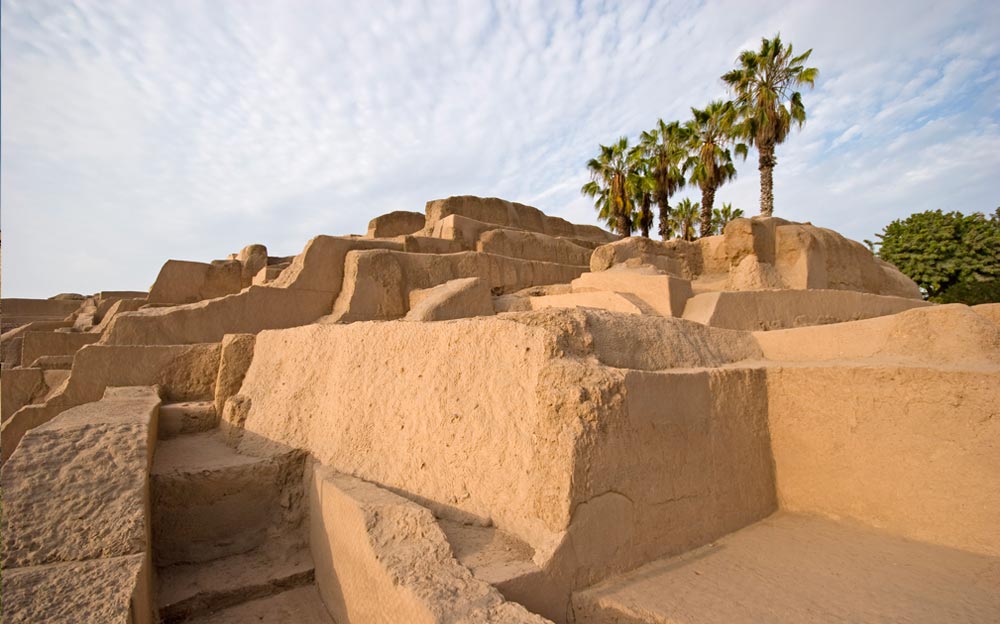
When the Incas arrived at the Rímac River Valley, the Ichsma culture had control over the region. The Incas conquered them in the 15th century. They then absorbed their territory into the Inca Empire. The Incas allowed the remaining Ichsma people to govern themselves. However, they were made to pay tributes to the emperor in Cusco.
The Spanish conquistadors arrived soon after to conquer the Inca Empire. Francisco Pizarro and his men defeated the Inca ruler Atahualpa in 1532. On January 18th, 1535, Pizarro founded the city of Lima. It was also named Ciudad de Los Reyes, meaning "City of Kings." This name comes from the fact that its founding was soon after the festival of the Three Wise Men (January 6th). In 1543, it became the capital of the Viceroyalty of Peru.
The Spanish Viceroy of Peru ruled the wider territory from Lima until 1821. In the early 19th century, wars for independence broke out in the south of the continent. Peru was one of the last territories to fight for independence. The liberating army, led by General José de San Martin, clashed with the loyalist army in Lima. San Martin defeated the loyalists and declared Peruvian independence on July 28th, 1821.
The territory then became the Republic of Peru, and Lima remained the capital. The fledgling country struggled at first, but gained greater economic power in the mid 19th century with the help of guano exports. From 1879–1883, the War of the Pacific between Peru and Chile ravaged the city. Lima went through an impressive era of reconstruction into the early 20th century. Around this time, Lima saw waves of Asian immigrants, too.
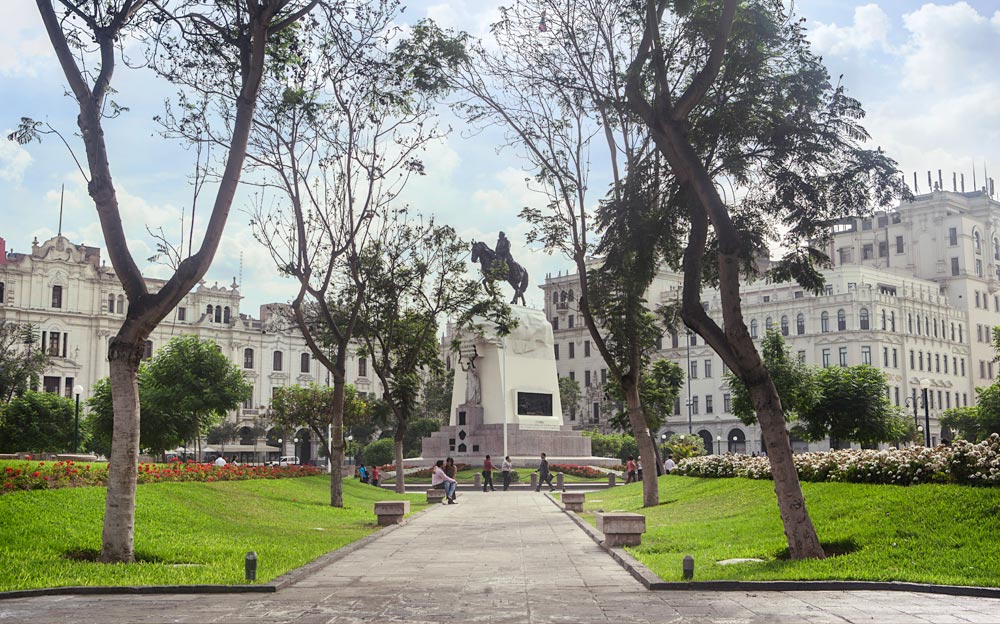
Lima grew rapidly during the 20th century with waves of migrants flocking to the city from rural areas. These migrants were all seeking better economic opportunities in the city. There were also waves of mass migration during the years of terrorism in the late 80s and early 90s. Lima was mostly unaffected by this violent period.
In the last several decades, Peru has made great strides in the tourism sector. Although most of the focus has been on Cusco and Machu Picchu, Lima has witnessed development, too. The city has become well-known for its historic sites and monuments. Tourists also come to visit the renowned Larco Museum, ancient pyramids, and historic center.
Moreover, Lima has recently experienced an epic culinary boom. Much of this is thanks to those Asian immigrants from the early 20th century. Peruvian cuisine is a unique blend of international and local flavors, and Lima is indisputably the country\'s culinary crown jewel. Those heading to Machu Picchu would be remiss to skip over Lima\'s melting pot of history, food, and culture.
Peru's capital is divided into 43 districts, each with its own local administration. Lima metropolitan area extends over 1,088.5 square miles (2,819.3 km2), so this division is vital.
Below are the most important districts to visit for tourism.
This district is officially called Cercado de Lima. However, most refer to it simply as the Historic Center. UNESCO declared Lima\'s historic center a World Heritage Site in 1988.
Here, you will find the impressive colonial architecture constructed by the Spanish conquistadors. Overlooking the Plaza de Armas are the Lima Cathedral and the Government Palace. On the surrounding side streets, beautifully carved wooden balconies cling to the facades of many buildings.
Two blocks from Plaza de Armas is the renowned San Francisco Monastery and Catacombs. Towering above ground, this building is an impressive example of Spanish Baroque architecture. But below ground, the eerie catacombs are impressive in an entirely different way.
Other sites worth visiting include the Plaza San Martin, Museum of Art Lima (Mali), and Parque de la Exposición. In the Parque de las Exposición you will find the family-friendly Magic Water Circuit.
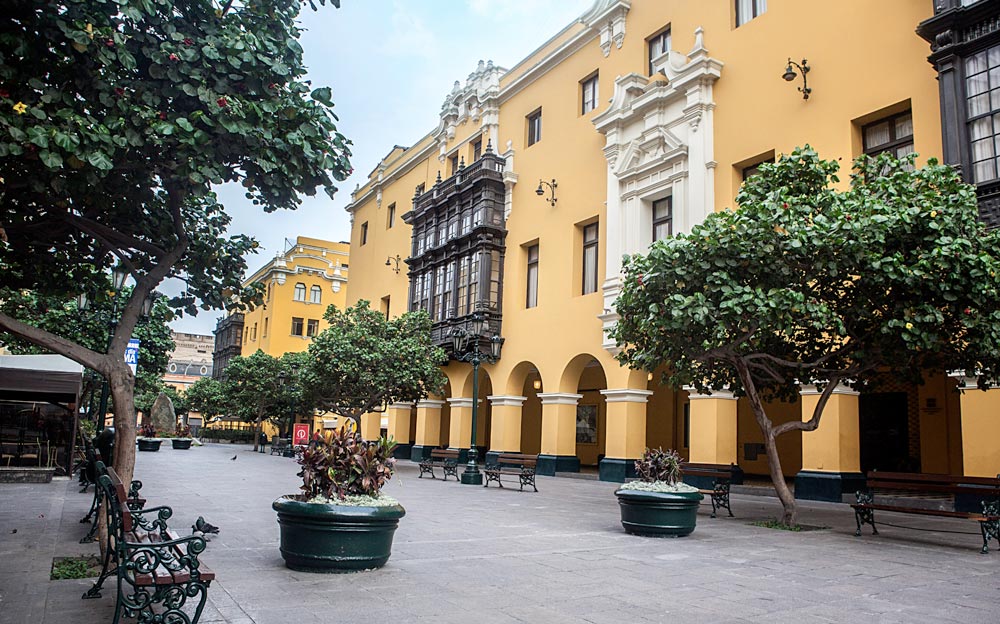
Miraflores is perhaps the most popular Lima district for tourists. And it\'s easy to see why. Miraflores is home to some of the best hotels in the city. Here, you will find ritzy Miraflores hotels, such as the JW Marriott, Hilton, and Belmond. Moreover, some of the best restaurants in Lima are located in this district. For example, the famous Nikkei restaurant Maido is situated inMiraflores.
Miraflores boasts many historic and cultural sites to see, too. Take a tour of the ancient Huaca Pucllana pyramid, or stroll through Love Park on the oceanfront Malecón. From this winding corniche, watch magnificent sunsets over the Pacific Ocean.
Another consideration is that it is a practical place to stay for tourists looking for shopping opportunities. Larcomar is a convenient cliffside mall with both international and national brands. There is also the Indian Market located on the north end of Parque Kennedy on Avenida Petit Thouars, where it is possible to find all sorts of Peruvian souvenirs.
Only quite recently did Barranco become a touristic area in Lima. Its vast array of colorful murals and artisan workshops give it a distinct bohemian vibe. Glimpse rows of jewel-colored beach houses dating back to the 1920s, as you saunter through the area’s streets. This vintage feel is in stark contrast to its contemporary and developing neighbor districts.
For art museums and galleries, Barranco is the place to be. With a single ticket, you can visit the MAC, Pedro de Osma Museum, and MATE. In addition, nearby Dedalo is an impressive artisan gallery and shop. Moreover, it is a must to visit the Bridge of Sighs (Puente de Los Suspiros) and watch street performers in the main square.
Barranco\'s culinary scene has grown in recent years, too. Lima\'s top-ranked restaurant Central moved here in 2018. Additionally, there are various cozy cafés and hip bars.

San Isidro is Lima\'s financial center. In fact, it\'s the only district in Lima with clusters of high rise office buildings. It\'s not a top district in regards to tourism, but anyone traveling to Lima on business will most likely stop here.
It\'s definitely an upmarket part of town. Here, you will find the Lima Golf Course, as well as the 5-star Country Club hotel. The world-ranked restaurant Astrid & Gastón is also situated in San Isidro.
If staying in this district, you will find great shopping on Avenida de Los Conquistadores. Next to this avenue sit the well-known park El Olivar. Inside, find 300-year-old olive trees, planted in the 17th century by the Spanish.
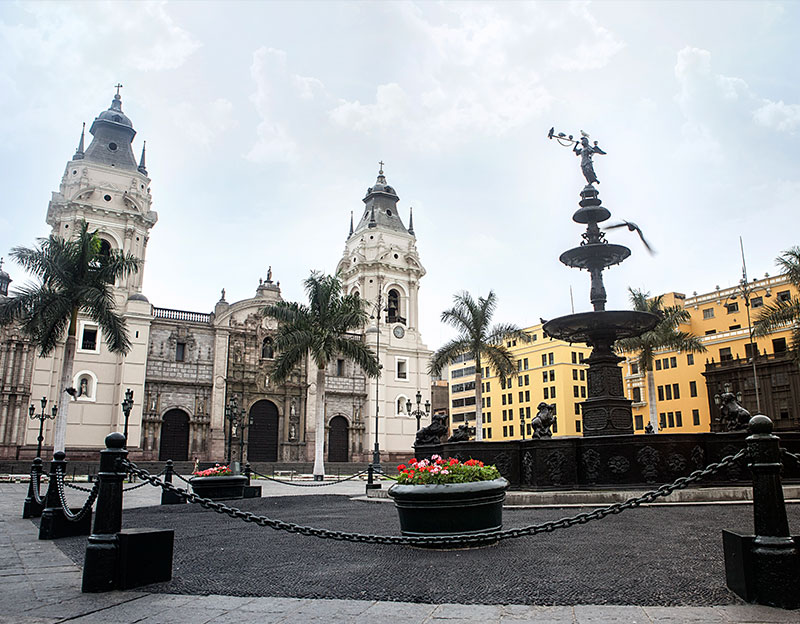
UNESCO recognized Lima\'s Plaza de Armas as a World Heritage Site in 1988. Impressive colonial Spanish architecture surrounds the square. On the southeast side is the expansive Catedral de Lima (Lima Cathedral). On the northwest side sits the Government Palace, where Francisco Pizarro once resided. Every day at noon it is possible to watch the changing of the guards.

The warm yellow exterior of San Francisco is both charming and inviting. The convent\'s library is world-renowned and holds 25,000 antique texts, some predating the conquest. Most travelers visit the convent for its eerie catacombs, where 25,000 bodies reside. UNESCO listed the building as a World Heritage Site in 1991.
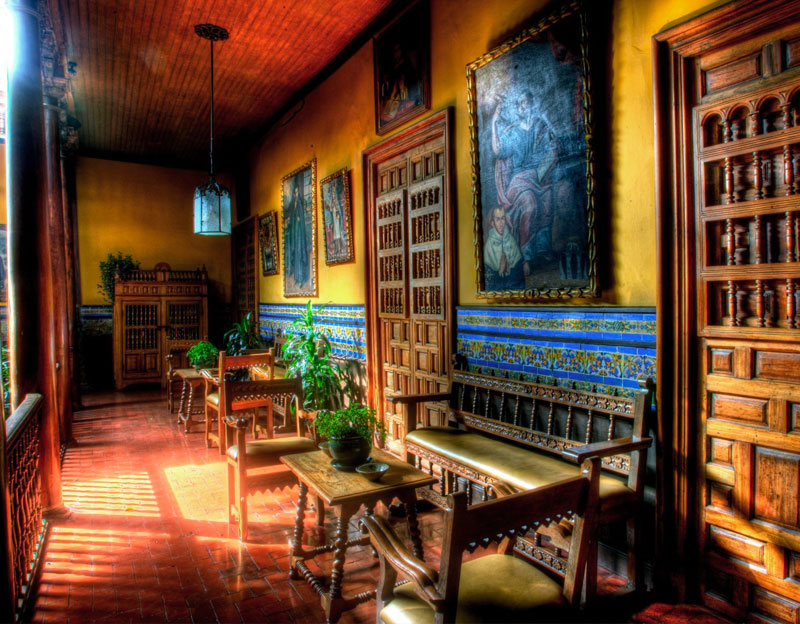
Casa Aliaga is as old as the Spanish colonial city of Lima itself. Capitán Jerónimo de Aliaga y Ramírez was allotted this plot of land, behind today’s Government Palace, to build his home. Along the mansion’s facade runs a dark wooden balcony, and vintage furnishings and tile work can be found on entering. His descendants have resided there ever since. This 5-century-old house is now open to visitors.
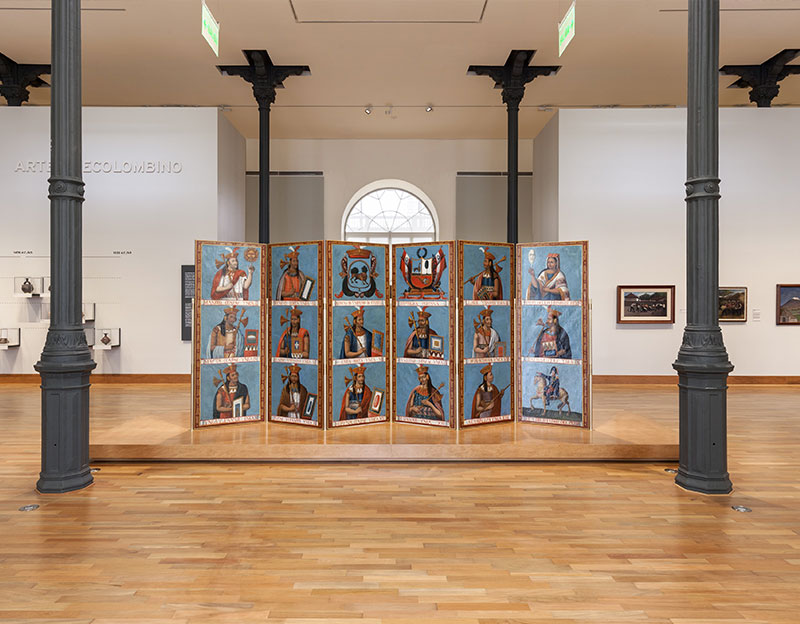
The MALI (Museo de Art de Lima) holds 3,000 years of Peruvian history. The galleries run in chronological order, creating an easy-to-follow path for visitors. The museum also often organizes live music performances on the steps of its entrance.
The Magic Water Circuit (Circuito Mágico de Aguas) will captivate the whole family. It is the world\'s largest fountain complex in a public park. There are thirteen illuminated fountains, as well as a play fountain for kids (and adults). Don\'t miss the Fantasy Fountain, a dazzling 394 ft (120 m) light show with synchronized music.

The Huaca Pucllana dates back 1,500 years to the Lima culture. "Huaca" means "pyramid" or "temple" in Quechua. Here, thousands of adobe bricks are arranged to create a truly impressive geometric mound. Ancient coastal cultures used it for ceremonial purposes, including human sacrifices. It sits right in the middle of a residential neighborhood of Miraflores. In fact, it was only recently excavated, in the 1980s, and later opened for tours.
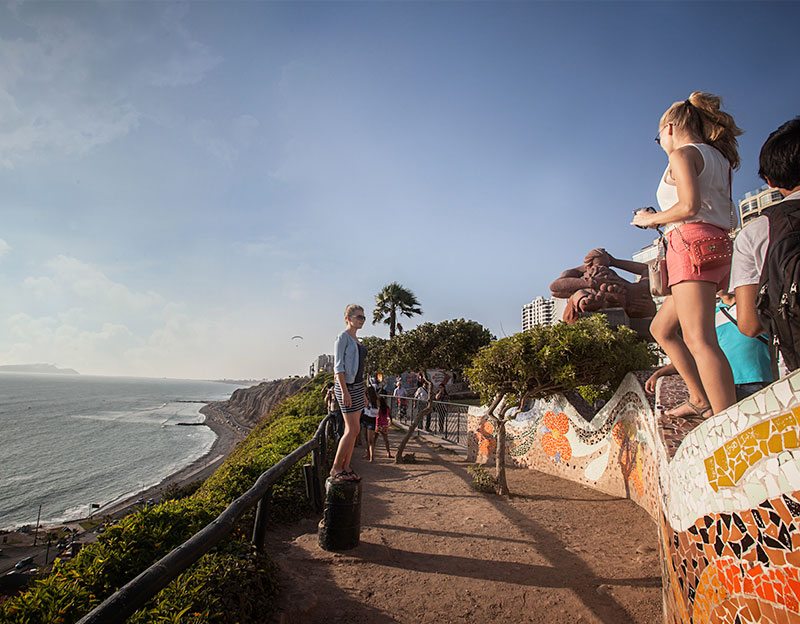
The Malecón is a perfect place for unwinding after a long day of touring. Smooth walking paths criss-cross this long park overlooking the Pacific, complete with well-kept grass and flower beds, and towering trees. Walk or bike among the locals along this lush green promenade. Check out "The Kiss" by famous Peruvian sculptor Victor Delfin in Love Park (Parque del Amor). More adventurous travelers often choose to launch themselves off the cliffside on a paragliding tour. If heights aren’t your things, just enjoy a vivid sunset.

Larcomar is an upscale shopping center built right into the cliffside in Miraflores. It houses a variety of shops, including high-end international and Peruvian brands. There are also restaurants and dessert parlours with views out over the ocean. The perfect place for a sunset dinner or pisco sour.

Parque Kennedy, named after the American president, is the most visited park in Lima. In the center, visitors will find artisan stands, as well as popular street foods. It hosts events and fairs throughout the year, such as the international book fair. Moreover, Parque Kennedy is a cat lover\'s paradise, as the small community of cats that inhabits the park can be spotted frolicking in the flowerbeds.

The Indian Market, or Mercado Indio, is the most extensive souvenir market in Lima. Conveniently located one block away from Parque Kennedy, its vendors flog every Peruvian souvenir you could ask for. Bag yourself alpaca sweaters, chullos (an Andean style of knit hat), paintings, ceramics, and more.

You wouldn\'t know it just by looking at the bridge, but Puente de Los Suspiros is one of the most romantic spots in Lima. In fact, the "Bridge of Sighs" was built on none other than Valentine\'s Day in 1876. Locals know it as a meeting spot for lovers, and a Peruvian musician even dedicated a waltz to the bridge.
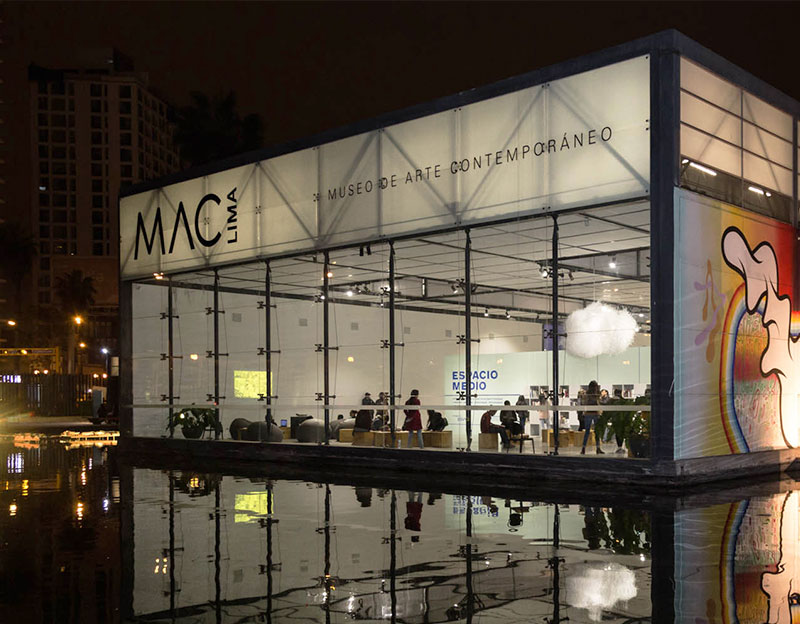
The MAC is Lima\'s top contemporary and modern art museum. It encompasses only three galleries, through which they rotate the work of Latin American artists. Outside the museum is a café and an interactive exhibition that\'s popular with children.
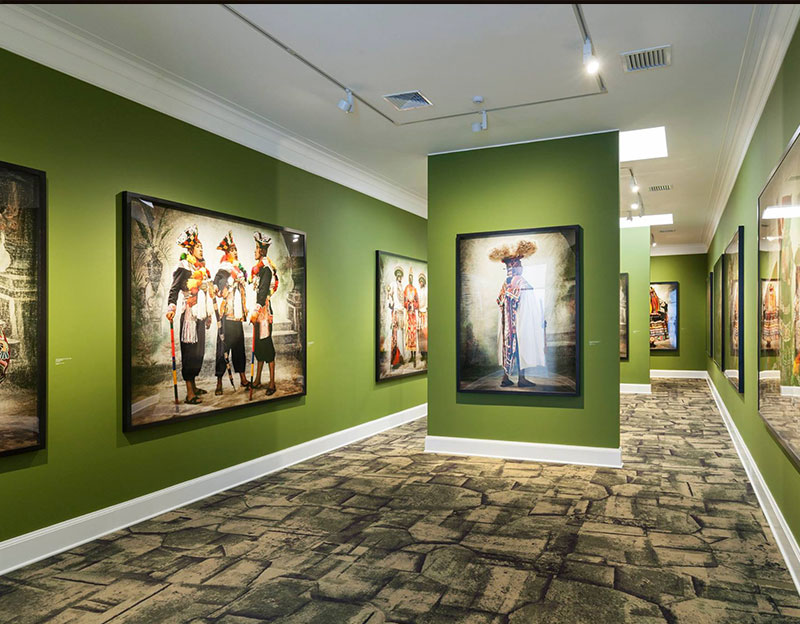
The MATE almost exclusively exhibits the work of Peruvian celebrity photographer Mario Testino. As such, one exhibit is dedicated entirely to his photographs of Princess Diana taken only 6 months before her death. In addition to Testino’s photos, visitors can enjoy an exhibit, housed in a separate building, that features a rotation of work by local artists.

The house of the 19th-century politician Pedro de Osma y Pardo became a museum in 1987. Both the casona and the treasures inside are relics of history. The artifacts are of varying ages, dating back to the 16th, 17th, and 18th-century colonial period. All exhibits are taken from the Osma family’s private collection.

The Larco Museum is not only the best museum in Lima, but is also top-ranked in South America. It is one of those rare museums in the world whose artifact storage room is open to the public. The museum\'s collection spans 5,000 years of Peruvian history, and features ceramics, textiles, jewels, and pre-Columbian erotica. After a visit, enjoy a wonderful dining experience in the picturesque garden café.

In this museum, not all that glitters is gold. In fact, many of the glittering things here are weapons from around the world. Miguel Mujica Gallo, a Peruvian businessman, donated the pieces from his private collection. These include metal pieces from various ancient Peruvian cultures, as well as weapons.
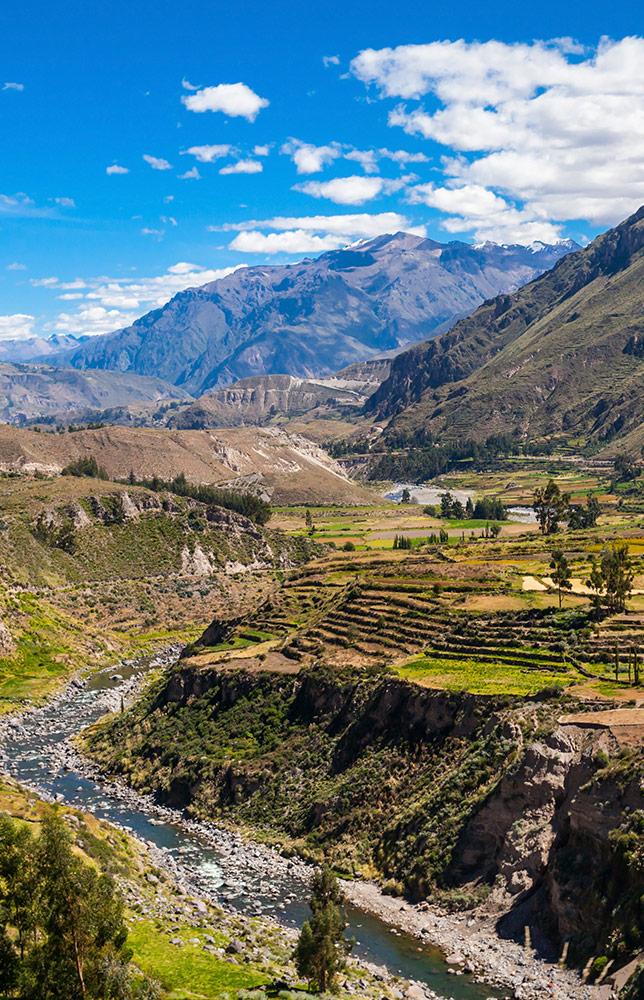
17 days
Amazon Rainforest, Cusco, Lima, Machu Picchu, Puno & Lake Titicaca, Paracas, Sacred Valley, Arequipa, Colca Canyon
New Year’s in Lima is perhaps more lowkey than in Cusco, but it\'s still fun to celebrate in Peru\'s largest city. At midnight, catch a fireworks display over the ocean from the Malecón (or from a swanky ocean view hotel room). Party-goers can also dance the night away at one of Lima\'s many discotecas. Just be sure to get on the list early!
On this day, Lima residents celebrate the capital\'s founding in 1535. Witness cultural and artistic performances in the Historic Center. The festivities showcase the wonderful variety of culture and music throughout Peru. The highlight of the day is the Gran Serenata de Lima, or Grand Serenade of Lima, in the Plaza de Armas.
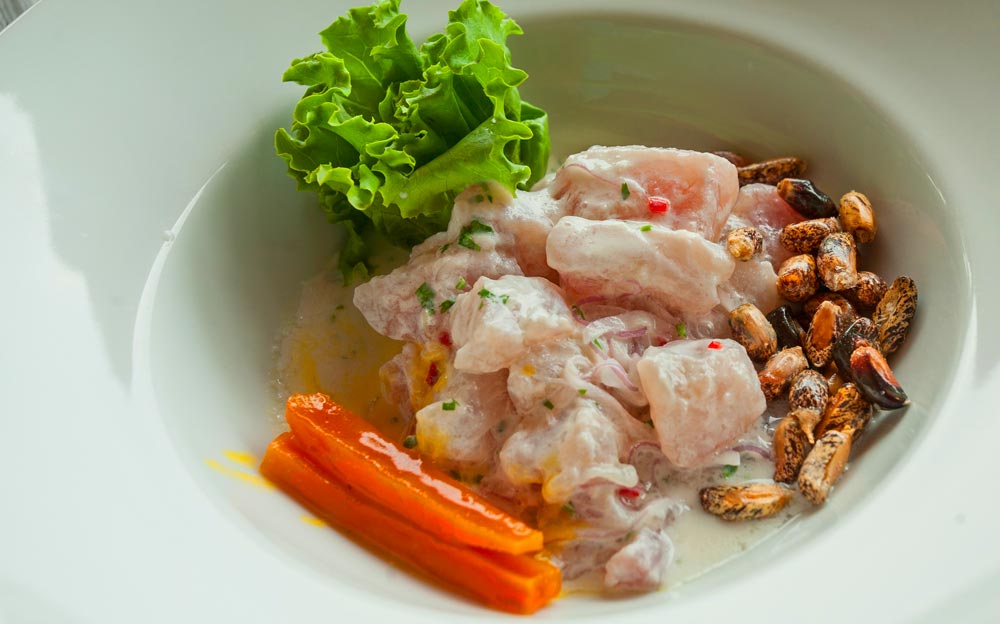
There is no denying the importance of ceviche to Peruvian culture. This is especially true of coastal Peru. Peruvians make their ceviche with raw white fish, cured in a marinade of onion, chili pepper, and lime juice. Celebrations on this day include food fairs and special restaurant menus.
The 28th of July celebrates Peru’s independence from Spain and is observed with patriotic zeal throughout the country. For the month of July, every house and building in Peru is adorned with the national red and white flag. Celebrations in Lima include military and themed school parades through the Historic Center. There are also fireworks throughout the city.

Santa Rosa (or Saint Rose of Lima) is one of Peru’s most revered patron saints. Rosa was known for her asceticism, as well as caring for the most vulnerable in Lima. She was the first person from the Americas to be canonized as a saint by the Catholic Church. In Peru, her saint’s day on August 30th is a national holiday. Visitors will witness religious processions in many parts of the country, but the procession in Lima is the grandest.
Mistura is an international food festival, held in Lima every year since 2008. The Peruvian gastronomic society Apega organizes and brings the festival to a new part of the city each year. It is a celebration of Peruvian cuisine, but also includes some international fare. Hundreds of thousands of visitors come to relish the unique, expertly prepared dishes.
Inside Las Nazarenas Sanctuary lies a colonial-era mural of el Cristo Moreno, the brown-skinned Christ. The walls of the sanctuary collapsed during earthquakes in 1655 and 1687, but both times the mural stayed intact. A miracle. Since then locals take part in processions throughout the city to celebrate.
Día de la Canción Criolla began in 1944 as a celebration of Criolla culture through its music. "Criolla" for Peruvians means so much more than its literal translation "creole." It speaks of a special melting of indigenous, Spanish, and African descendants and their cultures. On this day Limeños celebrate with live Criolla music on the streets and in peñas.
Christians celebrate All Saints\' Day on November 1st around the world. In majority Catholic Peru, many locals head out to cemeteries on the outskirts of town. With flowers in hand, they visit the gravesites of loved ones who have passed away. These cemeteries become beautifully engulfed with brightly colored bouquets.
Perhaps you're looking for ocean views from a posh Miraflores hotel room. Or maybe you need a conveniently located Lima airport hotel. Whatever your preference, we have you covered with a range of modern and stylish accommodations. Below are our top pick Lima hotels. You can also check out more incredible hotel options on our Lima hotel page.
Lima is the undisputed hub of Peruvian cuisine. Here in the capital, unique culinary traditions from all parts of this biodiverse country converge in a fantastic fusion of flavors. Lima restaurants are some of the best in the country and even the world. Below are what we consider to be the best restaurants in Lima, as well as the top bars.
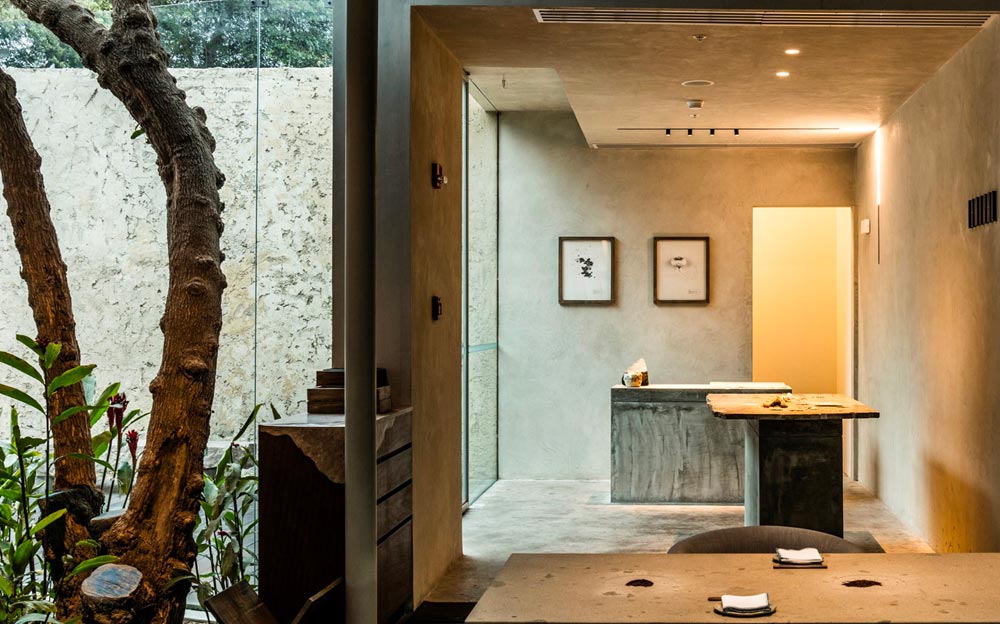
Maido ranked #1 in the list of 50 Best Restaurants in Latin America. It\'s easy to see, and taste, why. Chef Maido Mitsuhari specializes in Nikkei cuisine, a Peruvian-Japanese fusion. To taste the full variety of Nikkei, trying the "Nikkei Experience" is a must. This tasting menu is nothing short of visionary.
Calle San Martin 399, Miraflores
An early pioneer of Nikkei, Costanera 700 specializes in Japanese-Peruvian fusion. It has a particularly strong emphasis on seafood. Enjoy a selection of ceviches, sushis, and tiraditos. Also try teppanyaki-style dishes featuring Peruvian ingredients.
Jr. Manuel Tovar 179, Miraflores
The Amazon jungle is one of the most diverse places on the planet. And ámaZ takes full advantage of that diversity in its menu. This is the best establishment to try Amazonian food outside the Amazon itself. Recommended dishes include Amazonian ceviche and Juane Titoté, a traditional jungle dish.
Av. La Paz 1079 Miraflores
El Bodegón is the perfect restaurant when you\'re in the mood for traditional Peruvian cuisine. The atmosphere is intimate and inviting, and they serve large portions, so sharing with friends and family is easy!
Calle Tarapacá 197, Miraflores
Central ranked the #2 restaurant in Latin America and #6 in the world in 2019. Virgilio Martinez’s flagship restaurant continues to rise on the world food charts. Chef Virgilio exclusively uses ingredients native to Peru. Some of these are peculiar even for natives, adding an experimental touch. Be sure to plan ahead and make reservations months in advance.
Av. Pedro de Osma 301, Barranco
The best way to describe Isolina is Peruvian-styled gastropub. Its traditional dishes, many featuring offal, are set in a rustic yet modern ambiance. The menu is mostly criollo, or mixed heritage unique to Peru\'s demographics. Recommended dishes include cau cau (tripe) con sangrecita (chicken blood) and tortilla de sesos (calf brains). Despite its unusual fare, it’s an extremely popular establishment, so it\'s worth making a reservation.
Av. Prolongacion San Martín 101, Barranco
Gastón Acurio and Astrid Gutsche never fail to impress with their eponymous restaurant. Astrid & Gastón provides perfectly crafted traditional Peruvian cuisine. The restaurant and its clientele can only be described as sophisticated and chic. Reservations recommended.
Av. Paz Soldan 290, San Isidro

DonDoh is one of the few places in Peru that uses the Japanese robatayakis cooking style. Naturally, guests will choose from a selection of delectable meats, but the masterful grilling technique even enhances less traditional barbecue ingredients, like avocado and tender octopus. Expect a fantastic blend of Peruvian and Japanese cuisine.
Av. Los Conquistadores 999, San Isidro
Brewery, local beer on tap, food menu
Calle Manuel Bonilla 108, Miraflores & Av. Pedro de Osma 144, Barranco
Lounge and cocktail bar
Calle Bolognesi 460, Miraflores 15074
Specialized Pisco cocktails, Pisco and mixology classes
Calle Mártir José Olaya 202, Miraflores 15074
Fashionable lounge and cocktail bar, tapas, DJs
Calle Francisco de Paula Camino 330, Miraflores 15074
Brewery and taproom
Av. Almirante Miguel Grau 308, Barranco
Hip restobar & lounge, restored Republican casona
Av. San Martin 130, Barranco 15063
Outdoor patio, beer and wine, food menu
Av. Pedro de Osma 135, Barranco 15063
Restaurant, bar and lounge with an ocean view
Circuito de Playas, Barranco
José Chávez International Airport is the only commercial airport in Lima. It is located in the neighboring Callao District on the north side of the city.
When you land at the airport, you will proceed through immigration. Your passport must be valid for at least 6 months from your scheduled departure date. A customs agent will stamp your passport. The stamp functions as your tourist visa. After picking up your luggage, you will go through a final luggage screening.
An English-speaking representative from Inca Expert Travel will be waiting for you. As you exit the baggage claim area, look for them holding a sign with your last name (or group name) on it.
It is possible to arrange your own transportation from the airport. We recommend using one of the licensed taxi companies inside the airport.
Travel time from the airport to your Lima hotel depends highly on traffic. The morning rush hour that goes from the airport towards the center is from 7-10 am. The evening rush from the center towards the airport is from 6-9 pm and sometimes later on Fridays.
The touristic areas of Lima are all located at or slightly above sea level. This means that altitude sickness is not a concern in the capital.
Like the rest of Peru, you should not drink tap water here. Hotels will often provide filtered water to fill up a reusable water bottle. It is also easy to buy bottled water in convenience stores, bodegas, and supermarkets.
In case of illness during your stay, there are many great clinics in the city. Clínica Anglo-Americana and Clínica Good Hope have English speaking physicians on staff.
Like most big cities, crime in Lima is primarily characterized by petty theft, pickpocketing, and the like. It is possible to avoid this by using good judgment and common sense.
In general, you should always stay alert just like any new and foreign destination.
Miraflores, Barranco, and San Isidro are generally safe, tourist-friendly districts. It is ok to walk around these areas at night, given that you take the normal precautions. If visiting the Historic Center on your own, on the other hand, it’s best to not stray far from the touristic sites. Stay alert, especially if visiting at night.
Traffic in Lima is disorderly and likely more chaotic than in your hometown. With this in mind, be cautious when crossing the street (even when you have the right of way) and stay alert at all times.
Please speak with your Travel Advisor about any specific concerns.
Miraflores, San Isidro, and Barranco are secure, tourist-friendly districts. It’s pleasant to explore attractions near your hotel in these districts on foot.
If you are going from one of these districts to another or visiting the Historic Center, it\'s best to get a taxi. This is a common and convenient way to get around Lima. We recommend having your hotel call a reputable taxi service for you. It is also possible to use one of a variety of taxi apps available in Lima, but it\'s not recommended to hail a taxi off the street. The vehicles are rarely well-maintained, and they do not have taximeters. You must confidently negotiate the fare beforehand in Spanish to get the best rate.
Public transportation exists in Lima but is difficult to navigate. The Metropolitano service is the only one to have its route readily available. You must buy a card and add fare to it in order to use this transportation service. For local buses, it is necessary to already know the layout of Lima\'s main avenues to navigate bus routes. These vehicles can also be quite crowded and may require a preloaded bus pass.
If you are booking a trip with us, speak with your Travel Advisor to arrange transfers around Lima ahead of time.
The currency in Peru is the Sol, or more commonly referred to as soles. There are exchange booths and ATMs conveniently located at the Lima airport. However, you can generally find better rates at locations near your hotel. If staying in Miraflores, head to Parque Kennedy of Avenida Larco. Here you will find many banks, ATMs, and casas de cambio or exchange houses. As of August 2020, 1 USD = 3.50 soles.
Payment with credit cards at restaurants, hotels, and retail stores in Lima is common. Visa is the most widely accepted credit card.
Use cash to pay for taxis or make small purchases at bodegas and local markets. It is important to carry smaller bills and coins. Small vendors may not have enough change for large bills (i.e., bills of 50, 100, or 200 soles).

With so many things to do in Lima, you could spend days exploring Peru’s capital city. Lima is a bustling cosmopolitan center of art, culture, and cuisine.

Among the many ancient ruins in Peru, travelers may not expect to find pyramids. Yet, right in the heart of the urban center of Lima sits Huaca Pucllana.

As the gateway for travel to Peru, the capital of Lima provides the ideal start or end to a memorable vacation. Get the know the weather in Lima, so you can better plan how you’ll spend time in this vibrant metropolis.